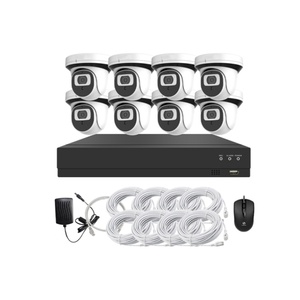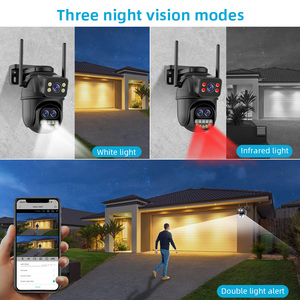Introduction to Security Cameras
In today's digital age, the need for security cameras has become paramount for both residential and commercial properties. These innovative devices provide a robust line of defense against theft, vandalism, and other security breaches. With technological advancements, security cameras have evolved into smart devices, allowing users to monitor their spaces in real time from virtually anywhere. This comprehensive guide delves into the critical aspects of security cameras, elucidating their types, functions, applications, and advantages.
Types of Security Cameras
Security cameras come in diverse models, each tailored to meet specific needs and preferences. Understanding these types is essential for making informed purchasing decisions:
- Dome Cameras: Ideal for indoor settings, these cameras offer a discreet design and 360-degree coverage.
- Bullet Cameras: Suited for outdoor use, these cameras are easily noticeable and provide focused monitoring of specific areas.
- PTZ Cameras: Short for Pan-Tilt-Zoom, these cameras can be remotely controlled to rotate and zoom, providing extensive surveillance coverage.
- Wireless Cameras: These cameras connect to Wi-Fi networks, eliminating the need for cumbersome wiring while providing flexibility in placement.
- IP Cameras: Internet Protocol cameras that offer high-resolution video and can be accessed remotely via a network.
Function, Feature, and Design of Security Cameras
Understanding the functions, features, and designs of security cameras will help you select the right model for your needs:
- High-Resolution Video: Modern security cameras offer high-definition video, ensuring every detail is captured clearly.
- Night Vision: Equipped with infrared technology, these cameras can function in low-light conditions, providing 24/7 monitoring.
- Motion Detection: Many security cameras are integrated with motion sensors, sending alerts to your device when movement is detected.
- Two-Way Audio: Certain models allow for real-time communication, enabling users to converse with visitors or intruders through the camera.
- Weatherproof Design: Outdoor security cameras feature durable designs resistant to various weather conditions, ensuring longevity and reliability.
Applications of Security Cameras
The applications of security cameras are vast and varied, making them indispensable in numerous scenarios:
- Home Security: Homeowners deploy security cameras to monitor their property, deter burglars, and keep an eye on children and pets.
- Commercial Surveillance: Businesses utilize security cameras to protect assets, monitor employee behaviors, and gather evidence in case of incidents.
- Parking Lots: Security cameras in parking areas enhance safety for vehicles and their owners, reducing the risk of theft or vandalism.
- Public Areas: Municipalities install cameras in parks, streets, and public transport to ensure safety and deter crime.
- Remote Monitoring: Security cameras with mobile apps allow users to monitor their properties from anywhere, providing peace of mind.
Advantages of Security Cameras
The benefits of incorporating security cameras into your security system are manifold:
- Deterrence: The mere presence of security cameras acts as a deterrent for potential intruders.
- Evidence Collection: In the unfortunate event of a crime, recorded footage can provide crucial evidence to law enforcement.
- Real-Time Monitoring: Users can monitor their property remotely, ensuring timely response to any suspicious activity.
- Insurance Benefits: Many insurance companies offer discounts on premiums for properties equipped with security systems.
- Peace of Mind: Knowing that your home or business is under continual surveillance fosters a sense of safety and security.






























































































































































































































